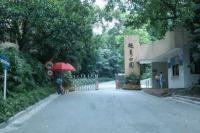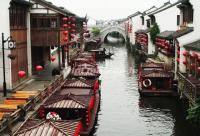Summer Palace
The Summer Palace lies in the northwest of Beijing, consisting of Longevity Hill (59 meters high), Kunming Lake and complex buildings with an area of 290 hectares.The Summer Palace is an excellent place to cool off during Beijing's hot Summer months. As it's name implies, Qing's Imperial rulers used it as a summer residence. The Palace began to assume its present shape during the reign of Emperor Qianlong who ruled in the late 18th century. Using an army of 100,000 laborers, the Emperor enlarged and deepened the lake, creating a network of small islands connected by dykes doubling as bridges. The layout is inspired by Taoist legends of immortal islands in the middle of misty lakes--the Chinese version of the Fountain of Youth myth.The Dowager Empress Cixi took an interest in the palace at the end of the 19th century. Using embezzled funds from the Imperial Navy, she restored a marble boat permanently moored at the lakeside, and rebuilt the halls beginning in 1888. Unfortunately, most of the complex was burned to the ground in an unwarranted display of foreign aggression by Anglo-French forces reacting to the Boxer Rebellion of 1900.
Nowadays most of the buildings have been completely restored, including a pleasant Southern Chinese shopping area at the north end of the palace, where once only the Emperors could shop.Today, every year the Summer Palace receives 6 - 7 million visitors both from home and abroad. Each year, over 10 million Yuan (US$1.35 million) is spent on renovating the Summer Palace to retain its resplendency and magnificence. Few people know that the Summer Palace has one of the richest collections of cultural relics in China, nearly 40,000 pieces in number. In 1998, UNESCO listed the Summer Palace as one of the World Heritage Sites.
Recommended China Tour Packages
-
2-day Guangzhou Guided Tour
-
Suzhou & Zhouzhuang Day Trip from Shanghai
-
8-day Natural Wonders of China














